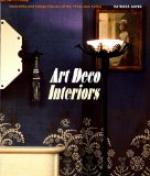PLATE XVII
An example of good mantel
decoration. The vases and clock are
Empire, the chairs Directoire,
and footstools Louis XV.
A low bowl of modern green Venetian glass holds flowers.
[Illustration: An Example of Perfect Balance and Beauty in Mantel Arrangement]
Edmund Bonneffe says that in the latter part of the Renaissance, while the effort of the Italians seems to have been to disguise wood, French cabinet-makers emphasised its value—an interesting point to bear in mind.
* * * * *
If we trace the Renaissance movement in Germany we find that it was Albrecht Duerer who led it. Then, as always, the Germans were foremost in wood carving; with Holland and Belgium they are responsible for much of the antique oak furniture on Renaissance lines. The Scandinavians have also done wonderful wood carving, which is easily confused with the early wood carving of the Russians, for the reason that the Swedes settled Finland, and Russia’s Ruric rulers (before the Romanoff house,—sixteenth century) were from Finland.
In the sixteenth century metal work in steel, iron and brass reached its height in Germany and Italy. It is supposed that the elaborate mounts in furniture which were later perfected in France had their origin in iron corners and hinge-plates used, at first, merely to strengthen, but as the men who worked in metals became more and more skilful, the mounts were made with the intent of mere decoration and to draw attention to the beauty of the wood itself.
Before Duerer turned Germany’s mind toward the Greek revival of Art, the craftsmen of his country had been following Dutch models. This was natural enough, for Charles V was king at that time, of Holland, Germany and Spain, and the arts of the three countries, as well as their commerce were interchangeable. In fact it was the Dutch painter, Van Eyck, who took the Renaissance into Spain when called thereto paint royalty. Sculptors, tapestry weavers, books on art, etc., followed.
That was the Spanish awakening, but the art of Spain during the sixteenth century shows that the two most powerful influences were Moorish and Italian. The most characteristically Spanish furniture of that period are those cabinets,—“Vargueos,” made of wood ornamented on the outside with wrought iron, while inside are little columns made of fine bone, painted and gilded. Much of the old Spanish furniture reproduces German and Italian styles. Embossed leather put on with heavy nails has always been characteristic of Spain, and in the seventeenth century very fine Spanish mahogany and chestnut were decorated with tortoise-shell inlaid with ivory, so as to make elaborate pictures in the Italian style. (See Baron Davillier on Spanish Furniture.).




